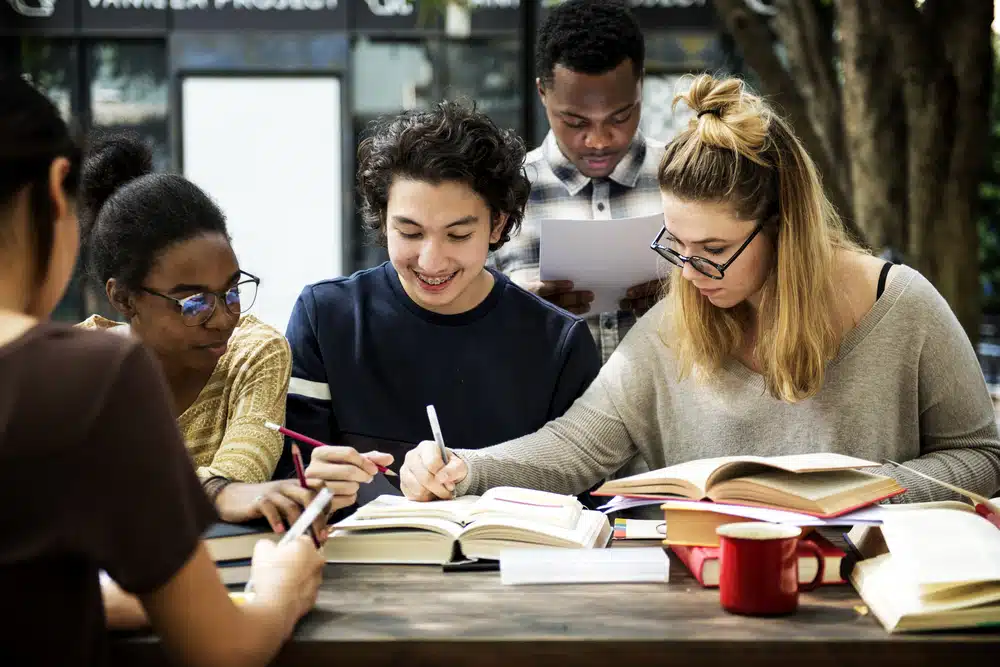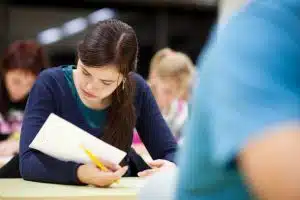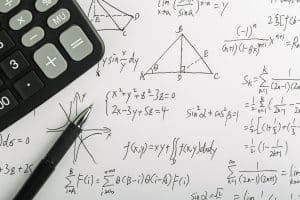The Ultimate Battle of the Minds: Physics Bowl Showdown
Get ready to witness the collision of brilliant minds and intense competition in the exhilarating world of physics with the Physics Bowl!
Physics has always been one of the most captivating subjects in the world of science. It is the study of the fundamental principles that govern the natural world around us. From the tiniest atoms to the vastness of the cosmos, physics seeks to understand and explain the underlying forces and phenomena that shape our reality.
For high school students, embarking on the journey of exploring physics can be both exhilarating and rewarding. One of the most exciting ways to delve deeper into this subject is by participating in physics competitions, particularly the Physics Bowl.
In this blog post, we will introduce you to the exciting and thrilling experience of participating in this competition. So, let’s begin!
What is the Physics Bowl?
What is the Physics Bowl? It is a national physics competition that challenges high school students to demonstrate their knowledge of physics concepts and problem-solving skills in a competitive setting.
The competition is organized annually by the American Association of Physics Teachers (AAPT) and is open to students from across the United States.
Students can register for the competition through their schools, and there is no limit to the number of students that can participate from each school. However, schools must have at least one AAPT member to participate in the competition.
Participating in this competition can be a great way for students to deepen their understanding of physics concepts and develop their problem-solving and critical-thinking skills.
The competition also provides an opportunity for students to connect with other physics enthusiasts from around the country and to showcase their knowledge and skills to colleges and universities.
Overall, this competition is a challenging and rewarding experience for students of all backgrounds who are interested in physics and want to test their knowledge and skills in a competitive setting.
Structure
The competition is structured into two stages, each of which is designed to test students’ knowledge of physics concepts and problem-solving skills in a competitive setting.
Stage 1: Multiple-Choice Exam
The first stage of the Physics Bowl is a multiple-choice exam that is administered at the local level by schools and colleges that have registered for the competition.
The multiple-choice exam consists of 40 questions and covers a wide range of physics topics, including mechanics, electromagnetism, thermodynamics, optics, and modern physics.
The multiple-choice exam is designed to test students’ knowledge of physics concepts and their ability to apply those concepts to solve problems. Students have 45 minutes to complete the exam, and the top-scoring teams from each region advance to the second stage of the competition.
Stage 2: Free-Response Exam
The second stage of the competition is a free-response exam that is administered at the national level. The free-response exam consists of six questions that are designed to test students’ problem-solving skills and understanding of physics concepts in more depth.
Students have 90 minutes to complete the free-response exam, and the questions are more complex and challenging than those on the multiple-choice exam. The free-response exam requires students to apply their knowledge of physics concepts to solve real-world problems and to explain their solutions in a clear and concise manner.
Scoring and Awards
The scores from both stages of the competition are combined to determine the final rankings of the participating teams. The top-scoring teams receive awards and recognition from the AAPT, and the highest-scoring individual students are also recognized for their achievements.
In addition to the two-stage exam, this competition also features a video contest, which challenges students to create short videos that demonstrate their understanding of physics concepts.
The video contest is judged by a panel of experts in physics education, and awards are given to the top-performing videos in various categories.
What are some common topics covered in the Physics Bowl?
What are some common topics covered in the Physics Bowl? The competition is designed to challenge students’ problem-solving skills and ability to apply physics concepts to real-world problems.
Here, we will discuss the common topics covered in the competition.
Mechanics
Mechanics is the branch of physics that deals with the study of motion, forces, and energy. Questions related to mechanics can cover a wide range of topics, including kinematics, dynamics, energy, momentum, and rotational motion.
Electromagnetism
Electromagnetism is the study of electric and magnetic fields and their interactions with charged particles. Questions related to electromagnetism can cover topics such as electric fields, magnetic fields, electric potential, electric circuits, and electromagnetic waves.
Thermodynamics
Thermodynamics is the study of heat and temperature and their relation to energy and work. Questions related to thermodynamics can cover topics such as temperature, heat transfer, thermodynamic processes, and the laws of thermodynamics.
Optics
Optics is the study of light and its interactions with matter. Questions related to optics can cover topics such as reflection, refraction, diffraction, interference, polarization, and optical instruments.
Modern Physics
Modern physics is the study of the most fundamental components of matter and energy, including quantum mechanics and relativity. Questions related to modern physics can cover topics such as atomic and nuclear physics, particle physics, special relativity, and the nature of light and matter.
In addition to these common topics, the exams may also include questions related to other areas of physics, such as acoustics, fluid mechanics, and astronomy.
What are the benefits of participating in the Physics Bowl?
What are the benefits of participating in the Physics Bowl? Participating in this competition can offer numerous benefits for students who are passionate about physics and interested in pursuing majors and careers in Science, Technology, Engineering, and Mathematics (STEM) fields.
Read on as we discuss some of these benefits in detail.
Developing problem-solving skills
This competition is designed to challenge students’ problem-solving skills and ability to apply physics concepts to real-world problems. It requires students to analyze complex physics problems and develop solutions within a limited amount of time.
Participating in this competition can help students develop critical thinking and problem-solving skills, which are essential for success in any STEM field.
Building a strong foundation in physics
The competition covers a wide range of physics topics, including mechanics, electromagnetism, thermodynamics, optics, and modern physics.
By studying and preparing for the competition, students can gain a deeper understanding of fundamental physics concepts and principles. This knowledge can help students excel in their physics classes and prepare them for more advanced physics courses in college.
Enhancing college and career opportunities
Students who perform well on the exams demonstrate a strong understanding of physics concepts and principles, which can be attractive to college admissions officers and potential employers.
Additionally, students who participate in this competition may have the opportunity to connect with other physics enthusiasts, including professors, researchers, and professionals in the STEM fields.
Strengthening teamwork and collaboration skills
Students are often grouped into teams and work together to solve physics problems. Participating in this competition can help students strengthen their teamwork and collaboration skills, which are essential for success in any professional setting.
By working together to solve problems, students learn how to communicate effectively, share ideas, and work towards a common goal.
How can students prepare for the Physics Bowl?
How can students prepare for the Physics Bowl? Preparing for this competition can be a challenging but rewarding endeavor that not only boosts students’ understanding of the subject but also helps them develop essential skills that will benefit them in their academic and professional lives.
Read on as we provide a comprehensive guide to help participants prepare effectively for this competition and maximize their chances of success.
Reviewing Physics Concepts
Physics is a complex subject that involves the study of natural phenomena such as motion, energy, and forces. Students must have a strong understanding of these concepts to perform well in this competition.
The following are some strategies for reviewing physics concepts, including breaking down complex concepts into smaller parts, using visual aids, practicing with real-world examples, and using online resources and textbooks.
Breaking down complex concepts into smaller parts
One effective way to review physics concepts is by breaking down complex concepts into smaller parts. Physics concepts often build on each other, so it’s essential to have a firm grasp of the foundational concepts before moving on to more advanced topics.
Students should start by reviewing basic physics concepts such as motion, energy, and forces and gradually work their way up to more advanced topics. Breaking down complex concepts into smaller parts can make them more manageable and easier to understand.
Using visual aids
Visual aids such as diagrams, graphs, and charts can be useful tools for reviewing physics concepts. Many physics concepts can be challenging to visualize, and visual aids can help students better understand these concepts.
Students can also create their own visual aids to help them remember key concepts and equations.
Practicing with real-world examples
Physics concepts are often easier to understand when applied to real-world examples. Practicing with real-world examples can help students see how physics concepts apply in everyday life.
For example, understanding the physics of motion can help students understand how roller coasters work. Students can find real-world examples of physics concepts in textbooks, online resources, and even in their everyday lives.
Using online resources and textbooks
There are many online resources and textbooks available to help students review physics concepts. Online resources such as Khan Academy and MIT OpenCourseWare offer free video lectures and practice problems on a variety of physics topics.
Textbooks such as “University Physics” by Young and Freedman and “Fundamentals of Physics” by Halliday and Resnick are also excellent resources for reviewing physics concepts. Students should choose resources that align with their learning style and level of understanding.
Practicing With Past Physics Bowl Exams
By practicing with past exams, students can familiarize themselves with the format of the competition, gain experience with problem-solving techniques, and identify areas where they may need additional review.
The following are some strategies for practicing with past exams of the competition, including reviewing answer keys, analyzing mistakes, and simulating test conditions.
Reviewing answer keys
Reviewing the answer keys can help students understand the reasoning behind each answer, identify common patterns in questions, and learn from mistakes. Students should review the answer keys after completing each practice exam and take note of any questions they answered incorrectly or had difficulty with.
Reviewing the answer keys can also help students identify areas where they may need additional review.
Analyzing mistakes
By reviewing mistakes, students can identify common patterns in their errors, recognize misconceptions, and develop better problem-solving strategies. Students should carefully review questions they answered incorrectly and try to understand why their answer was incorrect.
Analyzing mistakes can also help students identify areas where they need additional review and avoid making similar mistakes in the future.
Simulating test conditions
Students should try to create an environment that simulates the conditions of the actual competition as closely as possible. This means setting aside a specific time to take the practice exam, working without interruptions, and timing themselves.
Simulating test conditions can help students develop better time management skills, improve their ability to focus under pressure, and build confidence for the actual competition.
Collaborating with Peers
Physics can be a challenging subject, and working with others can help students develop a deeper understanding of concepts, improve their problem-solving skills, and build teamwork skills. Here, we will discuss some strategies for collaborating with peers, including forming study groups, participating in physics clubs, and attending physics conferences.
Forming study groups
Study groups provide a supportive environment where students can work together to solve problems, review physics concepts, and share study strategies. Study groups can also help students build relationships with their peers and develop a sense of camaraderie as they prepare for the Physics Bowl.
When forming a study group, students should try to find peers who are equally committed to preparing for the competition, have a strong understanding of physics concepts, and are willing to collaborate and share knowledge.
Participating in physics clubs
Physics clubs provide a structured environment where students can discuss physics concepts, participate in physics-related activities, and prepare for this competition together.
These can also provide access to additional resources, such as study materials, tutoring, and guest speakers. Participating in physics clubs can be a fun and engaging way to prepare for this competition and build lasting friendships with like-minded peers.
Attending physics conferences
Physics conferences provide opportunities to attend lectures, participate in workshops, and network with other physics students and professionals. Attending physics conferences can also help students stay up-to-date with the latest developments in physics and gain a broader perspective on the field.
By attending physics conferences, students can broaden their knowledge of physics, make connections with peers and professionals, and gain inspiration for their future careers.
Seeking Guidance from Teachers and Mentors
Physics is a complex subject, and having the support and guidance of experienced teachers and mentors can help students gain a deeper understanding of concepts, improve their problem-solving skills, and build confidence.
Below are some strategies for seeking guidance from teachers and mentors, including participating in mentorship programs and reaching out to experts in the field.
Participating in mentorship programs
Mentorship programs provide students with the opportunity to work closely with experienced physics professionals who can provide guidance and support as they prepare for the competition.
Mentors can provide feedback on practice exams, offer tips on problem-solving strategies, and provide insights into the physics field. Mentorship programs can be a great way for students to gain exposure to the physics industry and build a network of contacts.
Reaching out to experts in the field
Reaching out to experts in the field is a great way to seek guidance and gain insights into the physics industry.
Students can reach out to physics professors, researchers, and industry professionals to ask questions, gain insights into their experiences, and receive guidance on preparing for the Physics Bowl.
Experts in the field can provide valuable insights into the physics industry, offer advice on problem-solving strategies, and provide tips on how to succeed in this competition.
By reaching out to experts in the field, students can gain a broader perspective on the physics industry and build connections with professionals who can help guide them in their future careers.
Participating in this competition can also give students an edge in their college applications. Admissions officers at top universities recognize the value of students who excel in physics, and a strong performance in the competition can demonstrate a student’s commitment to the subject as well as their problem-solving and critical thinking skills.
Additionally, being a participant or winner in this prestigious competition can be an impressive addition to a student’s resume and highlight their dedication to academic excellence.
At AdmissionSight, we understand the importance of showcasing your academic achievements in college applications. That’s why we offer personalized consultation services to help students like you identify their strengths and build a strong application that showcases their unique qualities and accomplishments.
By booking an initial consultation with us, you can gain valuable insights into the college admissions process, receive guidance on how to highlight your Physics Bowl participation and awards in your applications, and learn how to present yourself in the best light possible.
Contact us today to learn more about our services and how we can help you achieve your college admission goals.









































